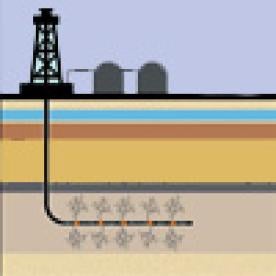In a detailed, 180-page report released Aug. 11, the EPA’s Science Advisory Board (SAB) faulted the clarity and conclusions of the agency’s landmark study on the environmental impacts of hydraulic fracturing, the high-pressure injection of water, sand and chemicals to break open shale and other “tight” geologic formations to release gas and other hydrocarbons.
In that study, formally dubbed “Assessment of the Potential Impacts of Hydraulic Fracturing for Oil and Gas on Drinking Water Resources (External Review Draft)” and released in June 2015, the EPA famously concluded that it “did not find evidence that these [hydraulic fracturing] mechanisms have led to widespread, systemic impacts on drinking water resources in the United States.”
That conclusion, according to the independent technical review panel of scientists from academia, industry and environmental groups, was not adequately supported by the limited evidence the EPA gathered in carrying out its study: “The SAB finds that the EPA did not support quantitatively its conclusion about lack of evidence for widespread, systemic impacts of hydraulic fracturing on drinking water resources, and did not clearly describe the system(s) of interest (e.g., groundwater, surface water), the scale of impacts (i.e., local or regional), nor the definitions of ‘systemic’ and ‘widespread.’”
The SAB echoed this critique throughout its report, faulting, for example, the EPA’s conclusion that spills of hydraulic fracturing fluid had not reached groundwater as “supported only by an absence of evidence rather than by evidence of absence of impact.” The Board called on the EPA to make multiple textual corrections, to seek data from other sources and to explain the failure to include prospective case studies and status updates on federal and state investigations into alleged hydraulic fracturing impacts in Dimock, PA, Pavillion, WY and Parker County, TX.
The Board’s critique was not unanimous, however. Four Board members filed a written dissent, finding that the EPA’s conclusion regarding a lack of “widespread, systemic impacts” was “clear, unambiguous, concise, and does not need to be changed or modified.”
The agency has yet to indicate how it plans to respond to the SAB report. The President sought $12.1 million in the FY 2016 budget for research on hydraulic fracturing, with $4 million earmarked for responding to comments received from the SAB and the public. In light of the SAB’s far-ranging critique, it is not clear whether that funding will suffice.



 i
i


